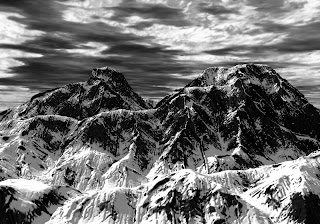Relating text and image
By adding text to an image or by reading a piece of text next to an image can really change how we look at and see the image. One simple word can change the whole meaning of the image and also the location of the image also has an impact on how we look at and feel about the image. If there was a landscape image in a police station we would think it was a scene of crime and yet it we saw it in a gallery with a gold frame we would think it was a famous piece of art work. Knowing a bit of history about the place that is in the image can also affect the way in which we view the image and how we feel about it. You can also choose what you include in an image and what you leave out so this can also totally change an image to make it look how you want it to.
There is also how people can twist and change text to get their point across such as in newspapers and using propaganda. How the text is laid on the image as well also changes things.
This is an image by Gillian Wearing and the sign makes us look at this image totally differently because it is giving us something to think about and the link between the man and the sign is a quote from him so it makes you have an idea of what he is like and gives you a bit more information than if it was just the photograph of the man.
This is an image by Joel Sternfeld and this is an example of a landscape which can change due to the location in which it is found and the text that is with it. “photography, memory and tragedy” makes you think a lot about the image and then you can realise that there is more to this image than we first thought or imagined. The light on the tree is really nice and makes it have a warm glow so that could mean they have warm memories of this place because of the way in which it is lit. This is also somewhere that if you knew the history of this place you would see it differently and you can relate to what it is and how you then are supposed to see it.
This shows how by looking in to something a bit more allows us to look at the images differently and how we can change the way an image is seen by the title we give it or where we choose it to be displayed.


































